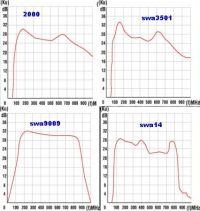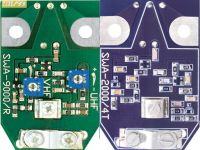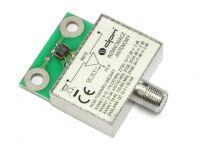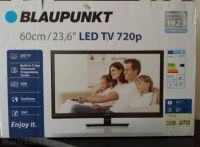Hello,
I have a bit of a problem with DVB-T television reception.
I have a broadband antenna on the first floor, on the balcony.
In front of you a south block, to the left, east a block very close, to the right, west two large trees, reaching the third floor.
I can't mount the antenna on the roof.
Although I am about 25km from the transmitter. The cost signal without an amplifier is negligible. The AX-1000 directional antenna with balun doesn't work at all.
However, the broadband antenna with the SWA 3501 amplifier worked and only such ...
I give the signals that I currently receive, broken down into frequencies:
602MHz Signal 100kW (Czech Republic) Signal quality 100 / Signal 91 varies 95/90 93/87 98/90
698MHz 63kW signal (Polsat, TVN, TV Plus and others) 100/98 100/96
634MHZ Signal 100kW TVP1 TVP2 overdrive signal 0/100 2/100 and in a moment it will click 100/100
746MHz (TTV, TV Focus, Freeze Frame) The weakest signal 50kW 35/80 19/90 30/91 35/93 - weak sometimes disappears.
I also catch 682MHz Mux L2 from Ornontowice 35/65 49/67 53/67
For this purpose I used the tuned SWA 3501 / 4T, I will present what I changed in it.
Resistor R2 from 210 ohms to 390 ohms (in the SWA 2000 version it is 300 ohms) and the power input for UHF from 390 ohms to 330 ohms (in the SWA 2000 version it is 470 ohms) which gives a change of the UHF supply voltage from 12V to about 7, 46V (I have 7.79V)
I enclose the characteristics of SWA 2000, SWA 3501 and photos of amplifiers.



Has any of my colleagues modified such amplifiers and could I say something about how to regulate the gain on particular frequencies? I want to raise the signal at 746MHz by about 2 dB and lower it to 634MHz by 4dB. Any ideas are welcome.
I have a bit of a problem with DVB-T television reception.
I have a broadband antenna on the first floor, on the balcony.
In front of you a south block, to the left, east a block very close, to the right, west two large trees, reaching the third floor.
I can't mount the antenna on the roof.
Although I am about 25km from the transmitter. The cost signal without an amplifier is negligible. The AX-1000 directional antenna with balun doesn't work at all.
However, the broadband antenna with the SWA 3501 amplifier worked and only such ...
I give the signals that I currently receive, broken down into frequencies:
602MHz Signal 100kW (Czech Republic) Signal quality 100 / Signal 91 varies 95/90 93/87 98/90
698MHz 63kW signal (Polsat, TVN, TV Plus and others) 100/98 100/96
634MHZ Signal 100kW TVP1 TVP2 overdrive signal 0/100 2/100 and in a moment it will click 100/100
746MHz (TTV, TV Focus, Freeze Frame) The weakest signal 50kW 35/80 19/90 30/91 35/93 - weak sometimes disappears.
I also catch 682MHz Mux L2 from Ornontowice 35/65 49/67 53/67
For this purpose I used the tuned SWA 3501 / 4T, I will present what I changed in it.
Resistor R2 from 210 ohms to 390 ohms (in the SWA 2000 version it is 300 ohms) and the power input for UHF from 390 ohms to 330 ohms (in the SWA 2000 version it is 470 ohms) which gives a change of the UHF supply voltage from 12V to about 7, 46V (I have 7.79V)
I enclose the characteristics of SWA 2000, SWA 3501 and photos of amplifiers.



Has any of my colleagues modified such amplifiers and could I say something about how to regulate the gain on particular frequencies? I want to raise the signal at 746MHz by about 2 dB and lower it to 634MHz by 4dB. Any ideas are welcome.





